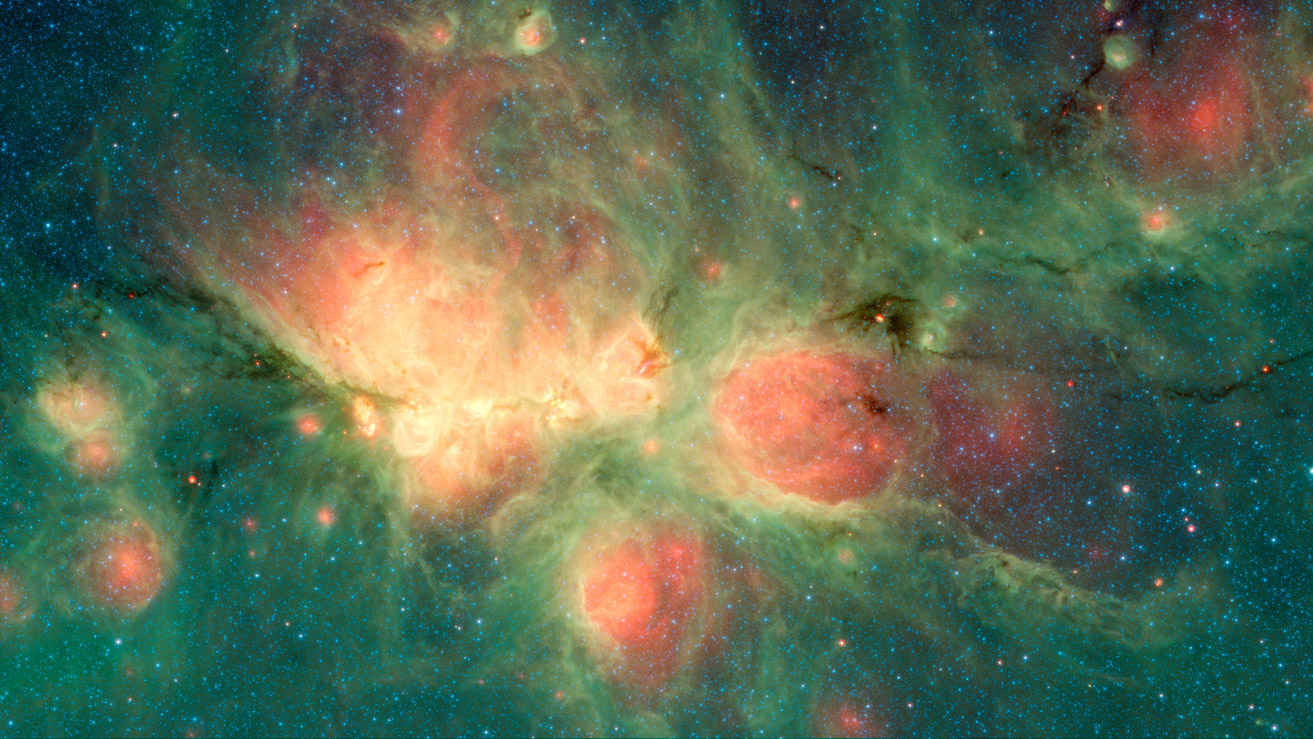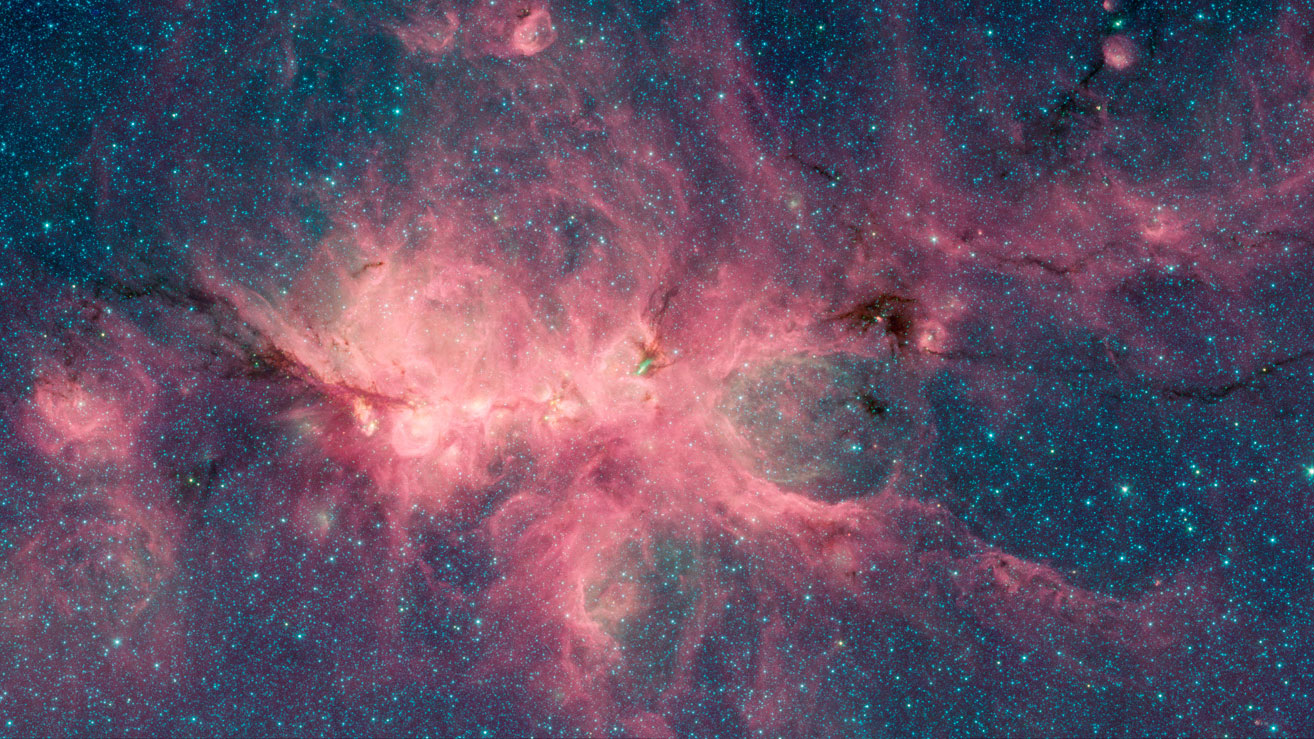Picture Purrrrrfect! NASA Snaps Incredible Photo of Cat's Paw Nebula

We all "knead" more space photos in our lives, so here's a stunning one from NASA's Spitzer Space Telescope of a region of the Milky Way that scientists call the Cat's Paw Nebula.
Spitzer sees the world in infrared light, which lets it cut through the clouds of dust that clutter up the galaxy so it can offer a crisp view of places like this nebula. Cat's Paw is located from 4,200 to 5,500 light-years away from Earth in the constellation Scorpius. [Spectacular Nebula Photos from Deep Space!]
Cat's Paw gets its name from the bubbles of hot gas it contains that — if you squint a bit — resemble feline paw pads. Those bubbles surround newly born stars, and Cat's Paw is still a star-forming neighborhood. The greenish background, in contrast, is caused by large chemical compounds fluorescing as they absorb radiation from those young stars.
The first image relies on data from two different Spitzer instruments, the Infrared Array Camera and the Multiband Imaging Photometer, whereas the second image, although covering the same real estate, uses only the first instrument. That means the image highlights former gas bubbles that have popped, so to speak.
Fortunately, the nebula is far out of reach of any terrestrial cats, who would surely pounce on those tempting features.
Email Meghan Bartels at mbartels@space.com or follow her @meghanbartels. Follow us @Spacedotcom and Facebook. Original article on Space.com.
Breaking space news, the latest updates on rocket launches, skywatching events and more!

Meghan is a senior writer at Space.com and has more than five years' experience as a science journalist based in New York City. She joined Space.com in July 2018, with previous writing published in outlets including Newsweek and Audubon. Meghan earned an MA in science journalism from New York University and a BA in classics from Georgetown University, and in her free time she enjoys reading and visiting museums. Follow her on Twitter at @meghanbartels.

